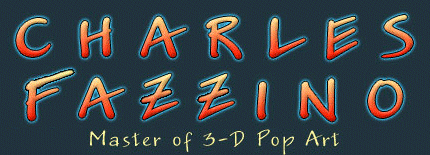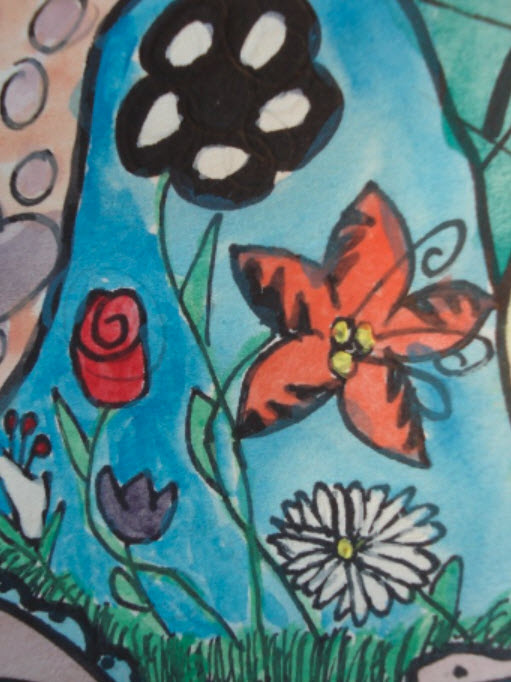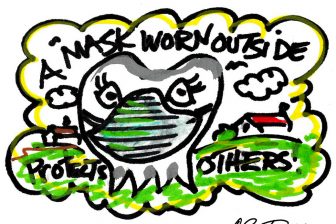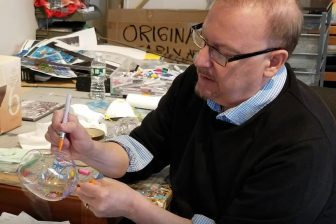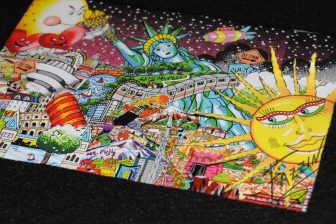Wax crayons have been around since the early 1900’s, and were created to be an educational tool for children to learn color. It is probably safe to say, almost every home with kids has a box of crayons floating around. Often times, these boxes end up a giant mix of half used and broken crayons. Put them to good use with this lesson plan from Visual Art Teacher, Linda Meo. Designed for 6th and 7th graders, it challenges students to learn basic watercolor techniques as well as some fun tricks.
Instructional Objectives
Students will learn some basic watercolor techniques, including wet-in-wet, crayon resist, and the salt trick. Students will be able to:
- Plan the composition for a painting by making thumbnail sketches.
- Use line, shape, mass, and color to convey a sense of space and light in a painting.
- Use watercolor paints and brushes appropriately.
- Employ the resist technique to watercolor painting.
- Clean and store watercolor sets and brushes correctly.
- Explain the basic concepts of light vs. shadow, positive vs. negative, foreground vs. background, wet-in-wet vs. wet-on-dry, transparency vs. opacity.
- Use art terms we’ve been learning all year when talking about art.
Terms Specific to this Project
- Watercolor – A painting material in which the colors or pigments are dissolved in water to be applied.
- Wet-in-wet – When layers of wet paint get applied on top of layers of already wet paint.
- Wet-on-dry – When layers of wet paint get applied on top of layers of already dried paint.
- Wash – A semi-transparent layer of color.
- Progressive wash – Creating a gradation of color using layers.
- Resist – Using layers to expose or define a design in negative space.
- Lifting out – Removing or erasing the paint after it has been applied.
- Transparent – Used when you want to allow layers underneath to be seen.
- Opaque – Used to obscure layers underneath.
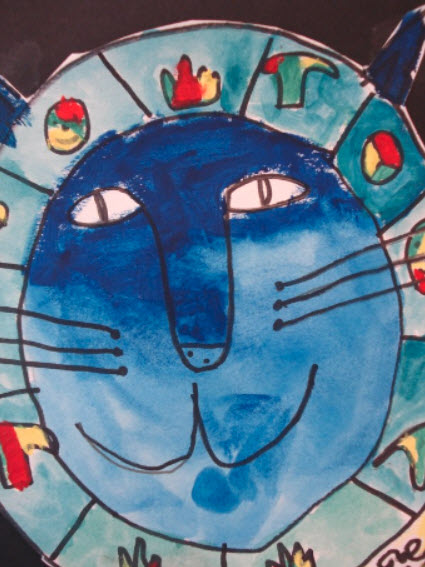
Jungle Cat, Grade 7. Click here to view more examples.
Motivation
Watercolor is an extremely versatile paint media that can be used for a variety of visual effects once you learn how to use it properly and learn a few techniques. Resist is just one technique employed in watercolor painting. A water-resistant medium (in this case, wax crayons) is applied to dry paper before painting to create the resist effect. The watercolor paint will not adhere to the resisted areas, but will seek out the cracks and crevasses within the resist layer and be absorbed by the paper. Watercolor is a transparent medium, and will contrast with the resist areas because crayon is an opaque medium. It looks cool! Salt, when sprinkled on wet watercolor, creates really interesting variations in texture and color.
Delivery of Instruction
Demonstration of technique
Pre-prepare a sheet of watercolor paper with some white crayon resist areas so there will be “secrets” revealed during the demonstration. Demonstrate everything from how to get water to the technique to specific clean-up procedures. Have an example or two of finished resist paintings to show the class.
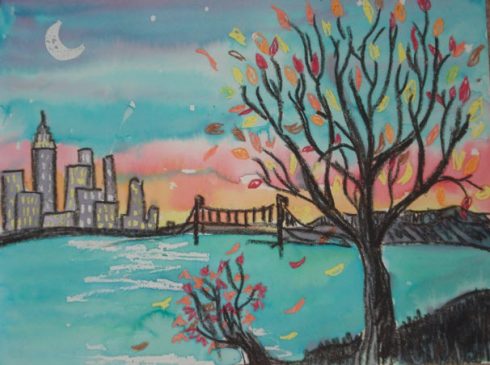
Crayon-resist watercolor painting. Click here to view more examples.
Closure
Project will take up to 2 classes to complete. When done, we put drawings where everyone can see them and critique. Talk about them in terms of the elements of art, specific project criteria, and celebrate how different they all are and how cool they all look.
Want to keep creating? Check out our other Art Lesson Plans.

